206
PHYSICAL EDUCATIO (875)
Aims:
1. To create awareness of the necessity for vigour
and efficiency through physical fitness.
2. To develop knowledge and understanding of the
requirements of healthy living, nutrition, exercise
and relaxation.
3. To create awareness of the necessity to develop a
good posture and physical poise.
4. To develop knowledge and understanding of skills
that will be useful as leisure time activities and
those of a recreational nature.
5. To create opportunities to develop esprit de corps,
courtesy, sportsmanship, social skills, democratic
conduct and ideals.
6. To develop appreciation of the aesthetics and
cultural aspects of movement.
CLASSES XI & XII
There will be one theory paper of three hours duration
and a Practical Test. Theory - 100 marks;
Practical - 100 marks.
The theory paper will be divided into sections as
follows: Section A will contain six compulsory
questions; Section B will contain two questions,
based on each major game to test the practical
experience of the candidates in two games of their
choice.
1. Sociological Aspects of Physical Education
(a) Games and sports as man's cultural heritage.
(b) Development of the individual through games
and sports.
(c) Role of Physical Education in promoting
national integration development of attitudes,
helpfulness, tolerance, patience team spirit
and unity, etc.
2. Physical Education
(a) Theories of Play.
(b) Interest and attitude.
(c) Motivation.
(d) Leadership.
3. Training Method
(a) Warming up and conditioning.
(b) Isometric exercises.
(c) Isotonic exercises.
(d) Circuit training.
(e) Interval training.
(f) Leadership training in Physical Education. Its
importance and facilities available in India.
4. Officiating and Coaching
Candidates to be fully aware of rules of sports and
games and their interpretation - Tournaments -
Trophies and Personalities connected with them.
Olympic Movement - difference between
Professional and Amateur. Modern trends and
above all, role of Physical Education in building
the all round personality of an individual.
5. Health Education
(a) Principles of Health Education. Importance of
Health Education for adults and the younger
generation through formal and non-formal
channels of education. Health problems and
role of Health Education in solving them.
(b) Prevention of disability and rehabilitation.
General principles of prevention of disability;
meaning and scope of rehabilitation; services
available for rehabilitation; role of the
community in rehabilitation.
(c) Correct posture, personal cleanliness,
recreation, foot care, sleep requirements.
Dangers of misuse of drugs. Dangers of
alcohol and smoking.
6. General
Study of the human skeleton; various systems and
their effect; muscular, circulatory, respiratory,
digestive, nervous and endocrine systems.
207
7. utrition: Weight Control and Exercise
Nutrition basics: dietary goals and basics for a
nutritious diet. Overweight and obesity. Role of
exercise in weight control; plan for losing weight;
lifetime concept of weight control.
8. First Aid
Treatment of cuts and abrasions, application of
splints. Treatment of sprains, cramps and cases of
drowning.
#ote: The candidates should be oriented fully
towards physical education in terms of strength,
muscular endurance, flexibility and above all
educational, recreational and competitive aspects
besides coaching, rules and organisation of various
major games and sports.
PRACTICAL TEST - 100 Marks
Practical work will be assessed in two parts as
follows:
(i) Course Work (ii) Practical Examination
1. Course Work - 50 marks
The skill and performance of the candidates will
be assessed by the teacher(s) responsible for
preparing them for the examination in two of the
following games and activities of their choice.
Athletics, Cricket, Hockey, Football, Volleyball,
Softball, Basketball, Tennis, Badminton,
Swimming, Dancing, Gymnastics, Yoga.
2. Practical Examination - 50 marks
The Practical Examination will consist of the
following:
(i) Physical efficiency tests,
(ii) Specialisation tests.
PHYSICAL EFFICIECY TESTS
The following tests to evaluate the physical fitness of
candidates will be conducted in the presence of the
Visiting Examiner. Tests 1 to 3 should be conducted
on one day and 4 to 6 on the next.
(a) Test 1
50 metre run, standing start: Timings to be taken to
the nearest tenth of a second (weather should be
relatively windless without extremes of temperature).
(b) Test 2
Standing long jump: A flat no slip surface should be
used. The candidate should stand with toes just
behind the take-off line and jump when ready. After
making preliminary swing with the arms the candidate
swings them forward vigorously, springing with both
feet simultaneously to land as far forward as possible.
Distance jumped to be measured in centimetres.
(c) Test 3
Distance run - 1000 metres run for boys, 600 metres
run for girls. Time to be taken to the nearest second.
(d) Test 4
(i) Floor push-ups for boys: The boy takes a frontleaning
position with body supported on hands
and balls of feet; the arms are straight and at right
angles to the body. He then dips or lowers the
body so that the chest touches or nearly touches
the floor, then pushes back to the starting position
by straightening the arms and repeats the
procedure as many times as possible. Only the
chest should touch the floor; the arms must be
completely extended with each push-up; the body
must be held straight throughout. Scoring consists
of the number of correct push-ups.
(ii) Push-ups for girls: This is executed from a stall
bar bench or a stool 32 cm high by 50 cm long
and 35 cm wide. It should be placed on the floor
about 15 cm from a wall so that the subject will
not take a position too far forward. The girl should
grasp the outer edges of the bench, or stool, at the
nearest corners and assume the front-leaning
rest position, with the balls of her feet on the floor
and with her body and arms forming a right angle.
She should then lower her body so that the upper
chest touches the near edge to the bench or stool,
then raise it to a straight arm position as many
times as possible. The girl's body should be held
straight throughout. If the body sways or arches,
or if the subject does not go completely down or
does not push completely up, half credit is given
up to 4 half credits.
208
(e) Test 5
Shuttle run: A flat course of 10 metres is required to
be measured between the two parallel base lines.
Behind each base line, a semicircle 50 cm radius with
centre on the base line is required to be marked. In
the far semicircle two wooden blocks (5 x 5 x 5 cm)
are to be placed. The candidate stands with feet
behind the base line, and on a signal, runs to the far
line, picks up one block which the candidate places in
the starting semicircle when he/she returns. The
candidate then repeats the procedure with the second
block. The time to the nearest tenth of a second is to
be taken till the second block is grounded in the
starting semicircle.
(f) Test 6
60-second sit-ups: The candidate lies with his/her
back on a mat or flat surface, feet about 30 cm apart
and knees flexed at a right angle. The candidate's
hands with fingers interlocked are placed behind the
back. A partner holds the candidate's feet in contact
with the mat or floor. On the signal "Go" the
candidate sits up to touch the knees with his/her
elbows. Without pause he/she returns to his/her
starting position and immediately sits up again. The
number of sit-ups completed in 60 seconds are to be
counted.
SPECIALISATIO TESTS
Candidates will be tested by a Visiting Examiner in
the presence of the teacher in two of the
games/activities that were selected for the Course
Work. Details of skill areas are given below.
ATHLETICS
Candidates will choose two of the following events in
which they wish to be tested:
(i) Track events - sprints, middle and long distance
races:
Boys - 100 m, 200 m, 400 m, 800 m, 1500 m and
3000 m.
Girls - 100 m, 200 m, 400 m, 800 m.
(ii) Track events – hurdles:
Boys - 110 m and 400 m.
Girls - 100 m.
(iii) Field events - jumps and throws:
Boys - Broad jump, high jump, triple jump, pole
vault, shotput, discus throw, javelin throw,
hammer throw.
Girls - Broad jump, high jump, shotput, discus
throw.
The following fundamental skills are required:
Sprints
Practice of starts with blocks using proper command.
Time action period - Reaction time, block clearance
time, acceleration time, velocity maintenance time,
finish time.
Middle Distance and Long Distance Races
(i) Style of endurance running.
(ii) Methods of endurance development.
Broad Jump
(i) Approach run.
(ii) Take off.
(iii) Flying Phase.
(iv) Landing.
Hop, Step and Jump (Triple Jump)
(i) Approach run.
(ii) Take off.
(iii) Performance of hop, step and jump.
(iv) Performance of combination of hops and steps.
High Jump
(i) Approach run.
(ii) Take off.
(iii) Flying phase: scissors, straddle, western roll or
"Fosbury flop".
Pole Vault (Boys only)
(i) Grip.
(ii) Pole carry.
(iii) Approach run.
209
(iv) Take off.
(v) Planting of pole.
(vi) Clearance of bar.
(vii) Landing.
Javelin Throw
(i) Grip.
(ii) Javelin carry.
(iii) Transition from approach to five stride rhythm.
(iv) Release.
(v) Reverse.
Shot put
(i) Stance.
(ii) Glide.
(iii) Release.
(iv) Reverse.
Discus Throw
(i) Stance.
(ii) Preliminary Swings.
(iii) Throws with one and a half turn.
(iv) Reverse.
CRICKET
1. Batting: pull, cut, hook, glance, stepping out to
drive the flighted ball.
2. Bowling: outswing, inswing, off break, leg break
and googly.
3. Fielding: Catching high and low and ground
balls.
HOCKEY
1. Straight hitting and stopping:
(a) Reverse hitting and stopping
(b) Hitting on the wrong foot
2. Straight push and stopping:
(a) Reverse push and stopping
(b) Pushing on the wrong foot
3. Scooping:
(a) Push scoop (b) Shovelling
4. Flick:
(a) Straight Flick (b) Reverse flick
(c) Flick on the wrong foot
5. Dribbling and carrying the ball
6. Passing:
(a) Through pass (b) Return pass
(c) Deflection pass (d)Interchanging position
7. Dodging:
(a) Dodging to opponent's left.
(b) Dodging to opponent's right.
(c) Double dodging.
8. Different Techniques of:
(a) Corner (b) Penalty stroke
(c) Push in (d) Goal keeping
9. Tackling:
(a) Lunging (b) Feinting
FOOTBALL
1. Passing and Interpassing:
(a) Interpassing between two players.
(b) Interpassing among three players.
(c) Three men weave.
(d) Interpassing among four players.
(e) Related practices.
2. Kicking:
(a) Revision of all kicking fundamentals.
(b) Lofted kick with either foot.
(c) Practice of corner kicks - lobbing chip shots
and penalty kicks.
3. Tackling:
(a) Interception and hasty tackles.
(b) Sliding tackles.
(c) Related practices.
210
4. Heading:
(a) Related practices, front, right side and left
side.
(b) Head-up drills.
5. Dribbling:
Practice of dribbling skills suited to actual playing
situations.
6. Tactics and coaching:
(a) Two back system - three back system.
(b) Principles of zone and man to man defence.
(c) Free kicks, penalty kicks, corner kicks.
(d) Tactics of defence and attachment.
VOLLEYBALL
1. The Pass:
(a) Over-head pass: Two-handed pass with back
rolling.
(b) Two-handed pass with side rolling.
(c) Jump and pass.
(d) Under arm pass.
(e) Forward dive and pass.
(f) One arm pass with side rolling.
2. The Serve:
(a) Over head service (Tennis-type).
(b) Round arm service.
(c) Floating service (overhead and arm).
3. The Set-up:
(a) Setting up for quick smash.
(b) Move and set up (from back zones).
(c) Setting up to different zones at varying
trajectories.
4. The et Recovery:
Two-handed overhead pass without rolling, one
hand under arm with or without rolling.
5. The Attack:
(a) Smash with turn of body.
(b) Smash with turn of wrist.
(c) Round arm smash.
(d) Smash on short pass (ascending balls).
(e) Simple attack combination.
6. The Block:
(a) Double block against different types of attack.
(b) Double block in assigned zones.
(c) Double block against quick attack.
(d) Double block against attack combination.
(e) Triple block against attack from zone.
7. Patterns of play:
4-2 system, 5-1 system.
BASKETBALL
1. Ball handling:
Holding position of fingers, body, position, stance
of player with ball.
2. Catching the ball:
(Receiving) skills involved.
3. Passing: Skills - (Drills in Pairs)
(a) Two-handed chest pass.
(b) Two-handed bounce pass.
(c) Two-handed underhand pass (Right / Left
side).
(d) Two-handed over head pass.
4. Dribbling:
Dribbling high with speed, using alternate hands,
low dribble.
5. Shooting:
(a) Two-handed set shot.
(b) Two-handed free throw.
(c) Lay up shot following dribble using right
hand (over the shoulder lay up).
6. Footwork:
Player stance, position of feet, position of hand,
elementary shuffling and slicing movements
(drills).
211
7. Pivoting, Stationary Pivot.
8. Individual defence:
Player stance: position of hands, position of feet,
defender's position in between opponent and
basket.
9. Team defence: Man to man defence.
10. Team offence: First break offence.
11. Full Court: Half court game using defence,
offence taught.
SOFTBALL/TEIS/BADMITO
Candidates will be required to demonstrate
competency in the rules, skills and fitness training
related to the game.
SWIMMIG
Candidates will be tested in two of the following
events of their choice.
Boys Free style - 100 m, 200 m, 400 m, 800 m.
Breast stroke - 100 m and 200 m.
Diving - Forward dive, backward dive,
reverse dive and inward dive.
Girls Free style - 100 m, 200 m.
Breast stroke - 50 m and 100 m.
Back stroke - 50 m and 100 m
Butterfly stroke - 50 m and 100 m.
Diving - Forward dive, backward dive,
reverse dive and inward dive.
DACIG
The candidates will be required to give a performance
of any two of the following dances of their choice,
with suitable accompaniment:
(i) Indian dancing: Bharatanatyam, Kuchipudi,
Kathakali, Kathak, Manipuri, Odissi,
Mohiniyattam, Bhangra and other folk dances.
(ii) Western dancing: Ballet, ballroom dancing, waltz,
fox trot, tango, samba, charleston, square dancing;
pop-dancing - jitterbug, twist, rock-and-roll.
GYMASTICS
The candidates will be tested in four exercises using
any two of the following bits of apparatus of their
choice.
(i) Floor Exercise
Boys - handspring to front somersault (tucked);
two headsprings; cartwheel to arabesque; arab
spring; side somersault; back roll to handstand,
cabriole jump throw; flic-flacs.
Girls - Leap and cabriole; step into ball of either
foot; flic-flacs; round off; handspring; cat leap;
legs split in air, cartwheel; handstand.
(ii) Balancing Beam (Girls only)
Run 2-3 steps; leap to riding seat with 1/2 turn; rise
to squat stand; ballet stand with 1/2 turn; leap on
either foot; step forward leap changing legs to rear
leap; lunge to side; stag leap; one-arm cartwheel.
(iii) Parallel bars (Boys only)
Swing forward and cast to upper arm hand;
forward roll; pirouette forward; lower to upper
arm hand; swing backward; straddle forward to
support (hold).
(iv) Vaulting horse
Boys - (long horse) Split vault; through vault;
hand stand with cartwheel; cartwheel and
handspring.
Girls - Astride vault; split vault, through vault;
handspring.
(v) Horizontal bar (Boys only)
Forward and backward giant swings; change of
grip; twists; the hip-circles.
YOGA
Candidates will be tested in any four of the following
asanas:
(i) Vrikshasana (Balancing on one leg with the
other flexed sidewards).
(ii) Utitha Trikonasana (Feet apart stand, side
bending).
(iii) Parivrtta Trikonasana (Feet apart stand, side
bend, with the trunk rotated backward).
212
(iv) Utitha Parvakonasana (Feet apart stand lunging
on one side).
(v) Purivrita Parvakonasana (Feet apart stand
lunging on one side and rotate the trunk
backwards).
(vi) Virabhadrasana (Balancing on one leg with
stretched hands, trunk and leg in a horizontal
position).
(vii) Uthitha Hasta Padangusthasana (Balancing on
one leg and trunk bending over the other
stretched horizontally).
(viii) Parasuottansasen (Feet apart stand and turning
one side and bend the trunk over the knee on
that side.
(ix) Ushtrarsan (kneel sit and flex back the trunk).
(x) Padakastasan (Attention position, flex and trunk
over the thighs).
(xi) Garudasan (Balancing one leg with the other
turned over the former).
(xii) Navasana (Balancing on buttocks with the legs
and trunk flexed over each other).
(xiii) Vajrasana (Sitting with flexed legs feet on the
side of buttocks).
(xiv) Supta Vajrasana (Supine lying in the position of
Vajrasana).
(xv) Kukutasana (Balancing on hands inserted
through the thighs and legs in padmasana).
(xvi) Jannsirasana (Paschimattrawasana on one leg
with the other leg flexed sideways).
(xvii) Ardha Baddha Padma Paschimttanasana
(Paschimattanasana on one leg with the other in
Padmasana position).
(xviii) Triang Mahaikapada Paschimatanasana
(Paschimottanasana on one leg with the other in
Najrasana position).
(xix) Moridriasana (Long sit with one knee flexed
and kept up and trunk turned over the stretched
leg).
(xx) Akanrava Dhannrasana (Long sit and pull one
foot to the corresponding ear).
(xxi) Uparrshta Konasana (Long sit with feet spread
and bring the head to the ground).
(xxii) Bakasana (Balancing on hands with thighs over
the arms above elbows).
(xxiv) Chakrasana (Cartwheel position).
(xxv) Nowli (contracting rectii abdominant in
uddiyana position alternate relaxation and
contraction of left and right muscles in quick
succession).
(xxvi) Kapalabathi (Quick succession of abdominal
strokes in padmasana position).
(xxvii) Bhastrika (Pranavam following the strokes of
Kapalabathi).
. B.
(a) The Rules and Regulations of Tournaments
(National and International); Trophies connected
with such tournaments and also personalities
connected should be taught.
(b) Organisation of Olympics, Asian Games and
Commonwealth games and the countries usually
participating in them should be taught.
(c) Various terms and terminologies connected with
each game should be clearly defined.
(d) While testing the candidates in games, the
following method should be adopted. Test of the
skill as a whole with emphasis on:
(i) Approach
(ii) Stance/Grip
(iii) Execution (degree of perfection) and
(iv) Follow through.
213
PERFORMACE TABLE - PHYSICAL EDUCATIO
PHYSICAL EFFICIECY TESTS
Test #o. 1
50m dash
(Timing in seconds
and tenths)
Test #o. 2
Standing long jump
(Distance in cm)
Test #o. 3
Distance run
(Timing in minutes
and seconds)
Test #o. 4
Push-ups
(Numbers)
Test #o. 5
Shuttle run
(Timing in seconds
and tenths)
Test #o. 6
60 s sit-ups
(Numbers)
Marks
Boys Girls Boys Girls Boys Girls Boys Girls Boys Girls Boys Girls
5 6.5 7.6 204 167 4 min
40 s
2 min
45 s
30 22 9.8 11.0 47 30
4 6.6 7.9 197 155 4 min
50 s
2 min
55 s
24 14 10.0 11.2 44 28
3 6.8 8.2 190 149 5min
3 min
15 s
17 8 10.2 11.6 41 26
2 7.1 8.4 183 142 5min
10 s
3 min
35 s
10 6 10.6 11.9 37 24
1 7.5 8.9 175 132 5 min
30 s
4 min
15 s
6 3 11.1 12.1 32 20
PERFORMACE TABLE - PHYSICAL EDUCATIO SPECIALISATIO TESTS
ATHLETICS - FIELD EVETS
Long jump
(m and cm)
High jump
(m and cm)
Hop step & jump
(m and cm)
Pole vault
(m and cm)
Shot put throw
(m and cm)
Discus
(m and cm)
Javelin throw
(m and cm)
Marks
Boys Girls Boys Girls Boys Boys Boys Girls Boys Boys
10 5.50 5.00 1.70 1.50 12.00 3.00 10.00 8.50 25.00 35.00
8 5.00 4.50 1.55 1.45 11.50 2.75 9.00 7.50 22.00 32.00
6 4.50 4.00 1.40 1.30 11.00 2.25 8.00 6.50 19.00 29.00
4 4.00 3.50 1.30 1.20 10.50 2.00 7.00 5.50 16.00 26.00
3 3.50 3.00 1.20 1.10 10.00 1.75 6.00 4.50 13.00 23.00
2 3.00 2.50 1.10 0.95 9.50 1.50 5.00 3.50 10.00 20.00
1 2.99 2.00 1.00 0.94 9.49 1.25 4.99 3.49 9.98 19.98
214
PERFORMACE TABLE - PHYSICAL EDUCATIO SPECIALISATIO TESTS
ATHLETICS - TRACK EVETS
100 m
(s and tenths)
200 m
(s and tenths)
400 m
(s and tenths)
800 m
(s and tenths)
1500 m
(min and s)
Marks
Boys Girls Boys Girls Boys Girls Boys Girls Boys
10 11.5 13.6 24.0 25.0 56.0 68.0 2.10 2.45 4.40
8 11.8 14.4 25.1 26.1 56.1 68.1 2.15 2.50 4.45
6 12.4 15.2 26.1 27.1 58.1 71.1 2.20 2.55 4.50
4 13.2 16.0 27.1 30.1 60.1 74.1 2.30 3.05 5.00
3 14.0 16.8 28.1 33.1 62.1 77.1 2.40 3.15 5.10
2 14.8 17.6 29.1 36.1 64.1 80.1 2.50 3.25 5.20
1 15.6 18.5 30.1 39.1 66.1 83.1 3.00 3.35 5.30
PERFORMACE TABLE - PHYSICAL EDUCATIO SPECIALISATIO TESTS
SWIMMIG
50m free
style
(s and tenths)
100m free
style
(min and s)
200m free style
(min and s)
400m
free style
(min and s)
50m breast-stroke
(min and s)
75m breaststroke
(min and s)
100m breaststroke
(min and s)
Marks
Boys Girls Boys Girls Boys Girls Boys Boys Girls Girls Boys
10
9
8
7
6
5
4
3
2
1
45.0
46.3
47.5
50.0
52.5
55.0
57.5
58.7
60.0
61.2
55.0
56.3
57.5
60.0
62.5
65.0
67.5
68.7
70.0
71.2
1:30
1:32.5
1:35
1:40
1:45
1:50
1:55
1:57.5
2:00
2:02.5
1:50
1:53
1:55
2:00
2:05
2:10
2:15
2:17.5
2:20
2:22.5
3.00
3.05
3.10
3.20
3.30
3.40
3.50
3.55
4.00
4.00.5
3.40
3.46
3.50
4.00
4.10
4.20
4.30
4.35
4.40
4.45
6.00
6.10
6.20
6.40
7.00
7.20
7.40
7.50
8.00
8.10
1.05
1.07
1.10
1.12
1.15
1.17
1.20
1.22
1.24
1.26
1.20
1.22.5
1.25
1.27.5
1.30
1.32.5
1.35
1.37
1.39
1.41
2:00
2:03.5
2:07.5
2:10.5
2:15
2:18.5
2:22.5
2:25.5
2:28.5
2:30.5
2:15
2:17.5
2:20
2:25
2:30
2:35
2:40
2:42.5
2:45
2:47
ote: For timings in between or higher than those indicated in the table the lower mark should be given.
215
PERFORMACE TABLE - PHYSICAL EDUCATIO SPECIALISATIO TESTS
SWIMMIG (continued)
50m back
stroke
(min and s)
75m back
stroke
(min and s)
100m butterfly
stroke
(min and s)
50m butterfly
stroke
(min and s)
75m butterfly
stroke
(min and s)
100m butterfly
stroke
(min and s)
Marks Diving
Boys Girls Girls Boys Boys Girls Girls Boys Description of action
10
9
8
7
6
5
4
3
2
1
0.55
1:00
1:02.5
1:05
1:07.5
1:10
1:12.5
1:14
1:15
1:16
1:10
1:15
1:17.5
1:20
1:22.5
1:25
1:27.5
1:29
1:30.5
1:31
1:45
1:52
1:56
2:00
2:07.5
2:07.5
2:11
2:14
2:16
2:18
2:00
2:00.5
2:05
2:10
2:15
2:20
2:25
2:27.5
2:30
2:32.5
0:55
0:57
1:00
1:02.5
1:05
1:07.5
1:10
1:12.5
1:14
1:16
1:05
1:10
1:12.5
1:15
1:17.5
1:20
1:22.5
1:24
1:25
1:26
1:37.5
1:45
1:49
1:53
1:58
2:01
2:07
2:04
2:09
2:11
1:50
1:52.5
1:55
2:00
2:05
2:10
2:15
2:17.5
2:20
2:25
Vertical, erect
body, arms and
legs together
Poor angle (either
backward or
forward)
Poor angle
opening of arms in
front, side, etc.
Poor angle
opening of arms
and legs
Poor angle
opening of arms
and legs and
flights.
ote: For timings in between or higher than those indicated in the table the lower mark should be given.
skip to main |
skip to sidebar
Get the latest free guess papers of class 8th, 9th, 10th, FA, FSC, BA, BSC, MA, MSC, MCOM, BCOM, MIT, PGD-It, and Other Classes of Punjab University and Others Colleges and Boards of Pakistan India and Bangladesh
MORE GUESSPAPERS and NOTES
197 MUSIC
221 BIOTECHOLOGY (878)
A level Latin
A-level ACCOUNTING 0452/01 Paper 1 Multiple Choice May/June 2009
A-level FIRST LANGUAGE CHINESE 0509/02
A-level Pakistan Studies 2006
A-level PHYSICS Paper 3 Extended 0625/03
BA Economics
BCOM PART 2 ADVANCED ACOUNTING
BCOM PART 2 BCRW
BCOM PART 2 BUSINESS LAW
BCOM PART-2 AUIDITING
BCOM-II Economics
BCOM-PART 2 BUSINESS TAXTATION
BCOM-PART 2 COST ACCOUNTING
BIOTECHOLOGY (878)
CA Foundation Course GDP n GNP
CA Free Markete Economy
CA important questions
CA Notes Scarcity and Choice
CA Notes UNIT 3.1 NATIONAL INCOME
CA Notes UNIT 3.2 GOVERNMENT AND THE ECONOMY
CA Notes UNIT 3.3 FISCAL POLICY
CA Notes UNIT 3.4 MONEY MONETARY POLICY
CA Notes UNIT 3.5 CAPITAL
CA Notes UNIT 3.6 INTERNATIONAL TRADE
CA Solved Assignments
CBSE Science - Chap 1 - Crop Production And Management - Page 13 - Q 1
CBSE Syllabus Class 9 - English (Communicative )
CBSE Syllabus of English Language And Literature for Class 9th For March 2009 Examination ENGLISH - LANGUAGE AND LITERATURE (Code No. 184)
CBSE Syllabus of Mathematics for Class 9th For March 2009 Examination Course Structure Class IX | Mathematics
CBSE Syllabus of Science And Technology for Class 9th For March 2009 Examination COURSE STRUCTURE CLASS IX | SCIENCE (THEORY)
CBSE Syllabus of Social Science for Class 9th For March 2009 Examination COURSE STRUCTURE Social Science | CLASS IX
Class X BIOLOGY GUESS QUESTIONS FOR SSC
Class X SOCIAL PAPER 1 GUESS QUESTIONS - - - - -
Class X Social Studies Question Paper
COMPUTER SCIECE (868)
COST AND REVENUE
Economics Solved Assignments
ELECTRICITY A D ELECTRO ICS (866)
Empirical and Molecular Formulas
EVIROMETAL SCIECE (877)
FASHIO DESIGIG (865)
GEOMETRICAL AD MECHAICAL DRAWIG (869)
Guess Paper – 2010 Class – X Subject –Chemistry (Equations)
Guess Paper – 2010 Class – X Subject – English Paper - I
IMPORTANT QUESTION CA
INDIAN CERTIFICATE OF SECONDARY EDUCATION EXAMINATION
INDIAN SCHOOL CERTIFICATE EXAMINATION
ISC MODEL EXAMII\ATION 2OTO CLASS XII MATHEMATICS
LATIN 0480/02 Paper 2 Literature May/June 2009
LITERATURE IN ENGLISH 2010/01
Managerial Economics Notes UNIT 3.1 THE SCOPE OF MANAGERIAL ECONOMICS
Managerial Economics Notes UNIT 3.2 RISK ANALYSIS RISK AND UNCERTAINTY IN MANAGERIAL DECISION MAKING
MARCH 2010
MARK SCHEME for the May/June 2008 question paper 2059 PAKISTAN STUDIES
MCOM Notes UNIT 1 DEFINITION AND BASIC CONCEPTS
MCOM Notes UNIT 1.5 PRODUCER BEHAVIOUR
MCOM Notes UNIT 1.6 THEORY OF THE FIRM
MCOM Notes UNIT 2.1 NATIONAL INCOME
MCOM Notes UNIT 2.2 INFLATION AND BUSINESS CYCLE
MCOM Notes UNIT 2.3 BALANCE OF PAYMENT AND EXCHANGE RATES
MCOM Notes UNIT 2.4 MONEY AND BANKING
Model Question Paper B.A. (Hons.) English Entrance Test
MS 01 Management Functions and Behaviour
MS 02 Management of Human Resources
MS 06 Marketing For Managers
MS-05 Management of Machines and Materials
O-level ACCOUNTING 0452/01 Paper 1 Multiple Choice May/June 2009
Pak Studies Ch 8 Chapter Name: Industry of Pakistan.
Paper BA Economics B
PHYSICAL EDUCATIO (875)

